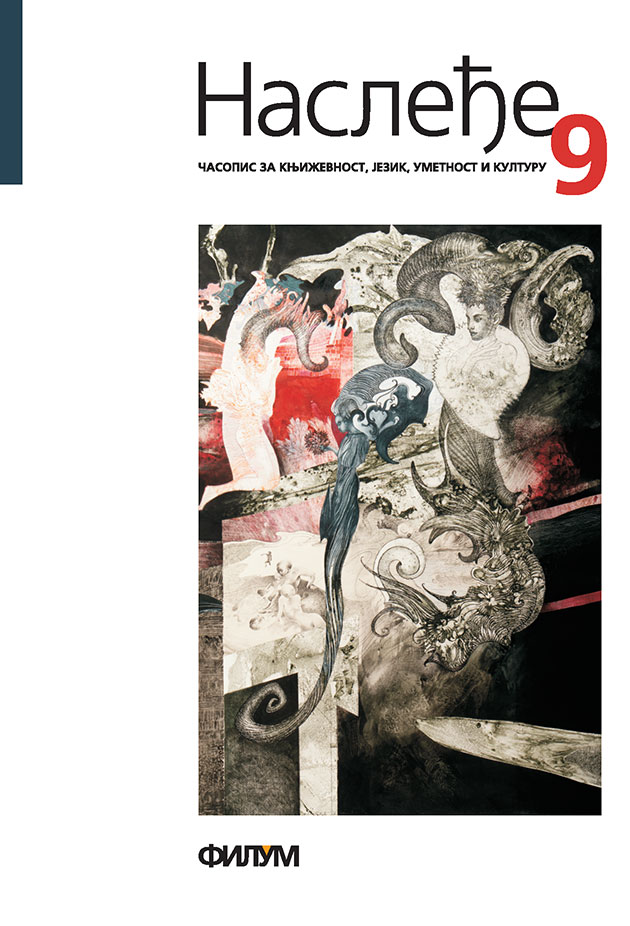PREPOSITIONS AND NATURAL PHENOMENA: A CONTRASTIVE STUDY OF SERBIAN, FRENCH AND GREEK
Keywords:
preposition, mass, count, discrete, space, time, contrastive analysisAbstract
In this paper we analyze the usage of the prepositions po, na and u in Serbian, both in the spatial and the more abstract domain of so-called “natural phenomena“. We show that the difference in their semantics is conceptually based on two basic cognitive oppositions: the contact - containment and the mass-count oppositions. In the contrastive part of our work we compare the Serbian data with their equivalents in French and English.
References
Ašić, Tijana, (2004), Mental representations of space and time: a pragmatic analysis of linguistic facts in French and other languages, PhD thesis, University of Geneva & University of Lyon 2.
Ašič Tijana (2007), “ The power of prepositions: Is he sleeping now or usually?“, ed by: L. de Saussure, J. Moeschler & G. Puskas, Tense, mood and aspect, Cahiers Chronos 17, Amsterdam, New York.
Aurnague Michel, Vieu Laure & Borillo, André, (1997), „Représentation formelle des concepts spatiaux dans la langue“; in, Denis, M (ed.), Langage et cognition spatiale, Paris, Masson, 69-102.
Bopp, Franz, (1833), Vergleichende Grammatik des Sanskrit, Zend, Griechischen, Lateinischen, Gotischen und Deutchen. Vol I, Berlin, Ferdinand Dümmler.
Casati, Roberto & Varzi, Achille, (1999), Parts and places: the structure of spatial representation, A Bradford Book, the MIT Press, Cambridge, Massachusetts, London, England.
Ivić, Milka, (1995), O zelenom konju, XX Vek, Beograd.
Jackendoff, Ray, (1996), “The Architecture of Linguistic – Spatial Interface“, in Bloom, P. Pustejovsky J. (1995), The Generative Lexicon, Cambridge (Mass.), The MIT Press.
Talmy, Leonard, (2000), Toward a cognitive Semantics, A Bradford Book, MIT Press.
Vandeloise, Claude, (1986), L’espace en français, Paris, Minuit. Vendler, Zenon, (1957), “Verbs and Times“, Philosophical Review 56, 143-160.
Ašič Tijana (2007), “ The power of prepositions: Is he sleeping now or usually?“, ed by: L. de Saussure, J. Moeschler & G. Puskas, Tense, mood and aspect, Cahiers Chronos 17, Amsterdam, New York.
Aurnague Michel, Vieu Laure & Borillo, André, (1997), „Représentation formelle des concepts spatiaux dans la langue“; in, Denis, M (ed.), Langage et cognition spatiale, Paris, Masson, 69-102.
Bopp, Franz, (1833), Vergleichende Grammatik des Sanskrit, Zend, Griechischen, Lateinischen, Gotischen und Deutchen. Vol I, Berlin, Ferdinand Dümmler.
Casati, Roberto & Varzi, Achille, (1999), Parts and places: the structure of spatial representation, A Bradford Book, the MIT Press, Cambridge, Massachusetts, London, England.
Ivić, Milka, (1995), O zelenom konju, XX Vek, Beograd.
Jackendoff, Ray, (1996), “The Architecture of Linguistic – Spatial Interface“, in Bloom, P. Pustejovsky J. (1995), The Generative Lexicon, Cambridge (Mass.), The MIT Press.
Talmy, Leonard, (2000), Toward a cognitive Semantics, A Bradford Book, MIT Press.
Vandeloise, Claude, (1986), L’espace en français, Paris, Minuit. Vendler, Zenon, (1957), “Verbs and Times“, Philosophical Review 56, 143-160.
Downloads
Published
06-30-2008
How to Cite
Станојевић, В. Ј., & Ашић, Т. В. (2008). PREPOSITIONS AND NATURAL PHENOMENA: A CONTRASTIVE STUDY OF SERBIAN, FRENCH AND GREEK. Nasleđe, 5(9), 19–27. Retrieved from http://35.189.211.7/index.php/nasledje/article/view/121
Issue
Section
Articles






